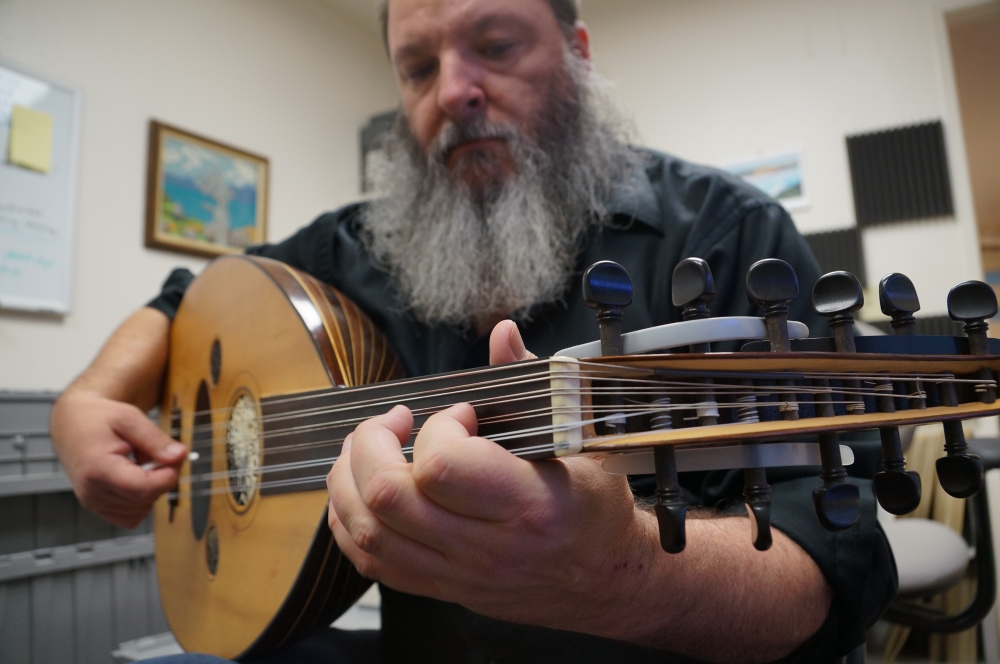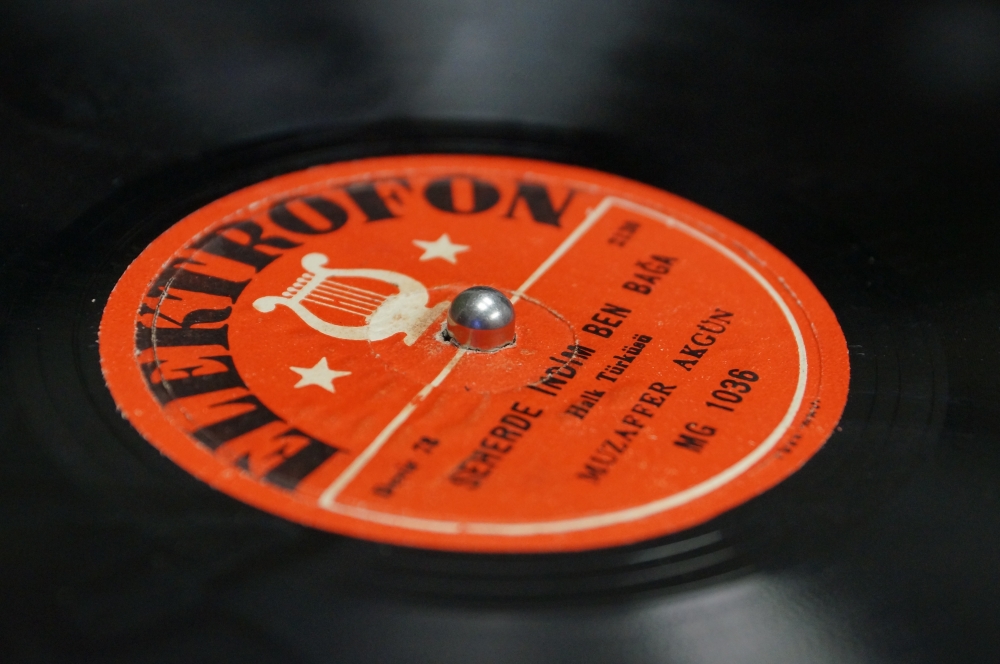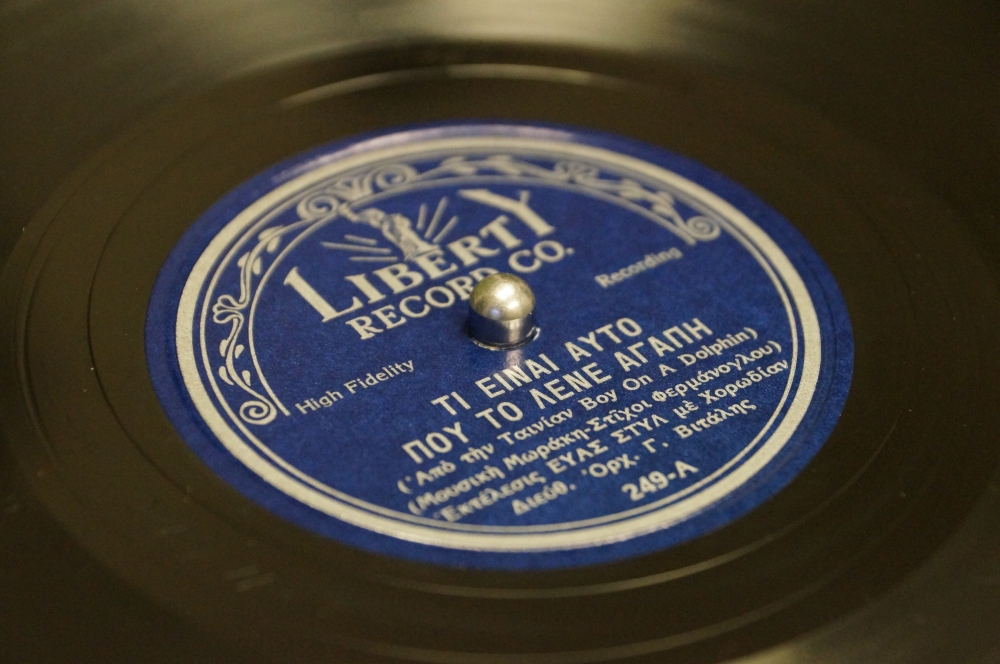Echoes of the Ottoman Empire



From the Middle Ages to the first decades of the 20th century, the vast Islamic state known as the Ottoman Empire held sway. It took root in what is present-day Turkey and grew to include various territories in what is now southeastern Europe, north Africa and the Middle East. Throughout the six centuries of the Ottoman period, the intermingling of cultures and beliefs was expressed in every aspect, from government and business to art, food and, most especially, music.
The empire is gone now, having dissolved by the end of World War I, but echoes of it remain, in the form of 78 rpm records that have recently been donated to the UC Santa Barbara Library’s Department of Special Collections. About 480 discs arrived at the library last year, nearly all in pristine condition.
“In general, early recordings from the Middle East are very difficult to find, especially in the West,” said special collections director David Seubert, of the gift received from donor Kutay Derin Kugay. “The community of collectors is very insular and they primarily buy, sell and trade to each other.”
For Eric Ederer, who is archiving the discs, the collection was a sonic windfall. Ederer, who received his doctorate in ethnomusicology at UCSB and specializes in Turkish music, has been busy listening to the collection, which is composed of recordings made from 1906 — just before the fall of the empire — into the 1950s.
The process includes washing each disc in a special machine and then placing it on a turntable to be played and digitized so as to be accessible to anyone who wants to listen to the recording. As the records play, Ederer uses his own expertise to take notes on the music, recording information such as the artists’ names, the instruments being used and, particularly, the songs’ makam — a musical concept that has no clear equivalent in Western music.
“A makam is a melodic mode which consists basically of a scale plus performance instructions for using it, such as the order in which to introduce the notes and whether the melody starts at the top, middle or bottom of the scale,” Ederer explained.
In addition to representing the distillation of centuries of cultural cross-pollination that fed the romantic notions of Orientalism, the recently acquired recordings paint a picture of a specific point in time: the encroaching westernization of one of the greatest empires in history. As progress in the West expanded, with developments such as the Wright brothers’ first flight, major scientific discoveries by Albert Einstein and the ascent of the British empire, the Ottoman hold in the East faded.
“From a musical standpoint, it’s very interesting because Ottoman court music is a multicultural music derived from Greek, Armenian and Jewish composers as well as Turkish Muslim ones,” said Ederer. “But for the last few hundred years of the empire, the nobility was trying to westernize. They were teaching their kids piano and they wanted them to listen to Brahms and chamber symphonies.
“And so you had this funny moment when all the great Ottoman composers couldn’t find gigs,” Ederer continued. “So they were trying to find work, and the places this was happening was in the cabaret scene — bars and restaurants, which because they served alcohol had to be owned by non-Muslim minorities.”
In these venues, there was this mixing of high and low culture, and of East and West. According to Ederer, from the point of view of the old musical establishment it was disastrous, as centuries-old classical music turned into pop music, now played in places forbidden to “respectable people,” while from the point of view of popular music there was a kind of renaissance catalyzed by the influx of classical players.
“The earlier part of this repertoire is a lot of that, and finding a mix that was going to work for everybody,” Ederer said.
It was a tumultuous time for the music in general, as former members of the empire, such as the Greeks, because of nationalism, were doing their best to remove Turkish influences from their cultural expression. So, much of the newly acquired collection also consists of the Greek musicians’ attempts to dissociate themselves by singing only in Greek and eliminating instruments that didn’t reinforce the Greek identity.
The advent of recording affected the music as well, said Ederer. Court musicians who had had the luxury of hours to play and improvise at leisure were suddenly forced to compress and distill their music into the three or three and a half minutes of recording time on each disc. The result was a polishing of style and particularly what has become the hallmark virtuosic improvisational flight — called the taksim — of each song.
Because of its new time constraint, Ottoman court music became more focused in its spontaneity.
“Part of the tradition is learning how to play a taksim,” said Ederer, “and today, because of recordings such as these, a big part of learning how to play one is listening to and imitating masters like the ones recorded in this collection.”
The collection will be available in the library catalog and accessible through the special collections request system.



